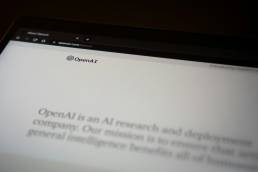Unraveling the Melody of Success
Spotify's Strategic Symphony.
1. The Evolution of Spotify: From Streaming Service to Audio Empire
In the ever-evolving landscape of digital entertainment, few companies have managed to transform themselves as dramatically and successfully as Spotify. What began as a simple music streaming service in 2006 has grown into a global audio powerhouse, reshaping how we consume and interact with audio content. Today, we’ll dive deep into Spotify’s strategic narrative, exploring how this Swedish startup became a household name and continues to innovate in the face of fierce competition.
The Birth of a Disruptor
Spotify’s journey began in Stockholm, Sweden, where founders Daniel Ek and Martin Lorentzon set out to solve the music industry’s piracy problem. Their solution? A legal streaming service that was “better than piracy.” This simple yet powerful idea laid the foundation for what would become a revolutionary platform.
As author and innovation expert Clayton Christensen once said, “Disruptive innovation can hurt, if you are not the one doing the disrupting.” Spotify took this to heart, disrupting not just piracy, but the entire music industry model.
From Niche Player to Global Phenomenon
Spotify’s initial growth was nothing short of explosive. By offering a vast library of music for free (with ads) or a small monthly fee, they quickly gained traction in Europe. However, it wasn’t until their U.S. launch in 2011 that Spotify truly became a global player.
Fun fact: Did you know that Spotify’s name came from a misheard shout? Ek and Lorentzon were brainstorming names when one of them shouted an idea. The other misheard it as “Spotify,” and they liked it so much, they kept it!
2. The Platform Ecosystem Strategy: More Than Just Music
As Spotify grew, so did its ambitions. The company recognized that to truly dominate the audio space, it needed to offer more than just music. This realization led to one of the most significant shifts in Spotify’s strategic narrative: the transition from a music streaming service to a comprehensive audio platform.
Embracing Podcasts
In 2019, Spotify made a bold move by acquiring podcast networks Gimlet Media and Anchor for $340 million. This marked the beginning of Spotify’s serious foray into the podcasting world. By integrating podcasts into its platform, Spotify aimed to become the “Netflix of audio,” offering a one-stop-shop for all audio content.
As Spotify CEO Daniel Ek stated, “Audio – not just music – would be the future of Spotify.” This vision has driven the company’s strategy ever since.
Audiobooks and Beyond
Not content with music and podcasts, Spotify has continued to expand its content offerings. In 2022, the company launched its audiobook service, adding over 300,000 titles to its platform. This move further solidified Spotify’s position as a comprehensive audio platform.
But Spotify isn’t stopping there. The company has been experimenting with video podcasts, live audio rooms (similar to Clubhouse), and even user-generated content. By diversifying its content, Spotify aims to keep users engaged and spending more time on the platform.
The Ecosystem Effect
This platform ecosystem strategy has several advantages:
- Increased user engagement: With a wider variety of content, users have more reasons to open the Spotify app.
- Reduced churn: The more content types a user engages with, the less likely they are to switch to a competitor.
- Attracting creators: By offering multiple content formats, Spotify becomes an attractive platform for creators of all types.
As platform strategy expert Sangeet Paul Choudary notes, “The power of platforms comes from their ability to create and facilitate interactions between producers and consumers.” Spotify’s ecosystem does exactly that, connecting audio creators with listeners in multiple formats.
3. Data-Driven Personalization: The Secret Sauce
While content is king, Spotify’s true competitive advantage lies in its mastery of data and personalization. The company has built a sophisticated recommendation engine that not only keeps users engaged but also provides valuable insights for content creators and advertisers.
The Recommendation Engine
At the heart of Spotify’s personalization efforts is its recommendation engine. This AI-powered system analyzes user listening habits, preferences, and even the time of day to create highly personalized playlists and recommendations.
Fun fact: Spotify’s famous “Discover Weekly” playlist, which provides users with 30 new song recommendations every Monday, was inspired by the mixtape culture of the 1970s and 80s!
Personalized Experiences
Spotify’s personalization goes beyond just recommending songs. The company has created a variety of personalized experiences, including:
- Wrapped: An annual recap of a user’s listening habits
- Daily Mix: A set of playlists tailored to different moods and genres
- Release Radar: A weekly playlist of new releases from artists a user follows
These personalized experiences not only enhance user engagement but also create shareable moments that help Spotify’s viral marketing efforts.
Data for Creators and Advertisers
Spotify’s data isn’t just valuable for users; it’s also a goldmine for creators and advertisers. The company provides detailed analytics to artists, helping them understand their audience and plan tours. For advertisers, Spotify offers targeted advertising based on listening habits and moods.
As marketing guru Seth Godin once said, “Don’t find customers for your products, find products for your customers.” Spotify’s data-driven approach allows it to do exactly that, matching listeners with content they’re likely to enjoy.
4. Global Expansion with Local Adaptation: Thinking Globally, Acting Locally
Spotify’s journey from a Swedish startup to a global audio platform is a masterclass in international expansion. However, what sets Spotify apart is not just its global reach, but its ability to adapt to local markets while maintaining a consistent brand identity.
The Expansion Strategy
Spotify’s global expansion has been aggressive but strategic. The company has focused on:
- Partnering with local telecom providers for bundled offerings
- Adapting pricing to local economic conditions
- Investing in local content and artists
This approach has allowed Spotify to compete effectively with local players and overcome cultural barriers.
Local Content, Global Platform
One of the key elements of Spotify’s localization strategy is its investment in local content. In India, for example, Spotify launched with a vast library of Bollywood music and regional language content. In Latin America, the company has heavily promoted reggaeton and other local genres.
Fun fact: Spotify’s most-streamed artist globally in 2022 was Puerto Rican rapper Bad Bunny, showcasing the platform’s success in promoting local artists to a global audience!
Cultural Sensitivity
Spotify’s localization efforts go beyond just content. The company has shown remarkable cultural sensitivity in its marketing and product features. For instance, in Middle Eastern countries, Spotify introduced a “Ramadan” mode during the holy month, featuring appropriate playlists and reduced ad frequency.
As international business expert Erin Meyer states, “What’s common sense in one culture may be anything but common in another.” Spotify’s ability to navigate these cultural nuances has been crucial to its global success.

With Spotify, users can stream millions of soothing tracks and podcasts, creating the perfect ambiance for relaxation and tranquility in their living spaces.
5. What is the strategic approach of Spotify?
Spotify’s strategic approach can be summarized as a multi-pronged strategy focused on content diversification, data-driven personalization, and global expansion with local adaptation. Let’s break this down:
- Content Diversification: Spotify has moved beyond music to include podcasts, audiobooks, and other audio content. This strategy aims to make Spotify the go-to platform for all things audio, increasing user engagement and time spent on the platform.
- Data-Driven Personalization: By leveraging its vast trove of user data, Spotify creates highly personalized experiences for each user. This not only enhances user satisfaction but also provides valuable insights for content creators and advertisers.
- Global Expansion with Local Adaptation: Spotify pursues aggressive global expansion while carefully adapting its content and features to local markets. This allows the company to compete effectively with local players and cater to diverse cultural preferences.
- Platform Ecosystem Development: Spotify is building a comprehensive ecosystem that connects listeners, creators, and advertisers. By fostering these connections, Spotify aims to create a self-sustaining platform that’s difficult for competitors to replicate.
- Technological Innovation: Spotify continually invests in improving its recommendation algorithms, user interface, and audio quality. This focus on technology helps maintain its competitive edge in a rapidly evolving industry.
As Spotify’s CEO Daniel Ek once said, “Our mission is to unlock the potential of human creativity by giving a million creative artists the opportunity to live off their art and billions of fans the opportunity to enjoy and be inspired by it.” This mission statement encapsulates Spotify’s strategic approach of connecting creators and consumers on a global scale.
6. What is an example of a strategic narrative?
Spotify’s evolution from a music streaming service to a global audio platform is an excellent example of a strategic narrative. Let’s break down the key elements:
- Origin Story: Spotify’s narrative begins with its founding in Sweden as a solution to music piracy. This origin story sets the stage for Spotify’s role as an industry disruptor and problem-solver.
- Vision: Spotify’s vision evolved from being the best music streaming service to becoming the world’s leading audio platform. This expanded vision allows for growth and diversification.
- Challenges and Solutions: The narrative includes Spotify’s challenges, such as negotiating with record labels and competing with tech giants. It then showcases how Spotify overcame these challenges through innovation and strategic partnerships.
- Transformation: A key part of Spotify’s narrative is its transformation from a music-only platform to a diverse audio ecosystem. This transformation story demonstrates the company’s ability to adapt and grow.
- Global Impact: Spotify’s narrative emphasizes its global reach and impact on the music industry, highlighting how it has changed the way people consume audio content worldwide.
- Future Outlook: The narrative doesn’t end with current successes but points towards future innovations and growth areas, keeping stakeholders excited about what’s to come.
This strategic narrative serves several purposes:
- It provides a coherent story that explains Spotify’s past, present, and future.
- It aligns employees, investors, and users around a common vision.
- It differentiates Spotify from competitors by highlighting its unique journey and approach.
As storytelling expert Nancy Duarte says, “The most effective stories are those that connect emotionally with the audience and inspire them to act.” Spotify’s strategic narrative does just that, inspiring users to join its audio revolution and investors to believe in its vision.
7. What are the key elements of Spotify’s strategy?
Spotify’s strategy comprises several key elements that work together to maintain its position as a leader in the audio streaming industry:
- User-Centric Approach: At the core of Spotify’s strategy is a relentless focus on user experience. This includes personalized playlists, intuitive interface design, and features like collaborative playlists that enhance social sharing.
- Content Diversification: Spotify has expanded beyond music to include podcasts, audiobooks, and other forms of audio content. This diversification strategy aims to make Spotify a one-stop-shop for all audio needs.
- Data Analytics and Machine Learning: Spotify leverages its vast data collection to provide personalized recommendations and insights. This not only improves user experience but also provides valuable data for artists and advertisers.
- Freemium Business Model: Spotify’s freemium model, offering both ad-supported free tier and premium subscription options, has been crucial in attracting and retaining users.
- Strategic Partnerships: Spotify has formed partnerships with telecom providers, hardware manufacturers, and even competing platforms like Uber to expand its reach and integration into users’ daily lives.
- Creator Tools and Analytics: Spotify provides tools and analytics for artists and podcasters, fostering a creator-friendly environment that attracts and retains talent on the platform.
- Global Expansion with Local Adaptation: Spotify’s strategy includes aggressive global expansion coupled with careful localization efforts to cater to diverse markets.
- Continuous Innovation: Spotify consistently introduces new features and improvements, from audio quality enhancements to new content formats like video podcasts.
- Brand Building: Spotify has built a strong brand identity associated with music discovery and personalization, reinforced through marketing initiatives like the annual Wrapped campaign.
- Ecosystem Development: Spotify is building a comprehensive audio ecosystem that connects listeners, creators, and advertisers, creating a network effect that strengthens its market position.
As Spotify’s Chief R&D Officer Gustav Söderström once stated, “We’re trying to innovate in a way that’s aligned with our mission of connecting even more creators with even more fans.” This statement encapsulates how each element of Spotify’s strategy aligns with its overall mission and vision.
8. What is Spotify’s strategic vision?
Spotify’s strategic vision has evolved over time, reflecting its growth from a music streaming service to a comprehensive audio platform. Currently, Spotify’s vision can be articulated as:
“To be the world’s leading audio platform, where users can discover, enjoy, and be inspired by a universe of audio content, and where creators can live off their art and connect with a global audience.”
This vision encompasses several key aspects:
- Audio Leadership: Spotify aims to be the dominant player not just in music streaming, but in the entire audio content space, including podcasts, audiobooks, and potentially new audio formats.
- Discovery Platform: A core part of Spotify’s vision is to be the go-to platform for discovering new content, whether it’s music, podcasts, or other audio forms.
- Creator Economy: Spotify envisions a platform where content creators can monetize their work effectively, fostering a vibrant ecosystem of diverse audio content.
- Global Reach: The vision includes connecting creators with audiences worldwide, breaking down geographical barriers in content consumption.
- Personalization at Scale: Spotify aims to provide a uniquely tailored experience for each of its millions of users, leveraging data and AI to understand and predict user preferences.
- Innovation Hub: The company sees itself as a driver of innovation in the audio space, continuously introducing new features and technologies.
- Cultural Influence: Spotify’s vision includes playing a significant role in shaping global music and audio culture.
As Spotify’s CEO Daniel Ek stated in a 2019 blog post, “We’re in the early days of the audio renaissance.” This statement reflects Spotify’s vision of leading this renaissance, transforming how people create, distribute, and consume audio content.
Spotify’s strategic vision is not static; it continues to evolve as the company grows and the audio landscape changes. However, the core elements of connecting creators and listeners, fostering discovery, and leading audio innovation remain constant.
By pursuing this vision, Spotify aims to maintain its position as a leader in the audio streaming industry while continually expanding its influence and reach in the broader audio content ecosystem.
Contact me if you have any questions you’d like answered! And if you enjoyed this article, be sure to check out my analysis of the strategic narratives of Lego, Nike, Apple, Harley Davidson, Patagonia, AirBnB, Netflix, and Tesla.
Related Posts
January 16, 2025
Unraveling Allbirds’ Strategic Narrative
Discover how Allbirds' strategic narrative drives success through…
November 18, 2024
Crafting the Future: OpenAI’s Strategic Narrative
Explore OpenAI's strategic narrative and discover how storytelling shapes its…
November 18, 2024
Unpacking Shopify’s Strategic Narrative: Rewriting the Rules of eCommerce
Explore how Shopify transformed from a snowboard shop to a global commerce…
November 12, 2024
Canva’s Strategic Narrative: How Design Democratization Created a $40 Billion Empire
Discover how Canva's strategic narrative empowers creativity through…
Related Posts
January 16, 2025
Unraveling Allbirds’ Strategic Narrative
Discover how Allbirds' strategic narrative drives success through…
November 18, 2024
Crafting the Future: OpenAI’s Strategic Narrative
Explore OpenAI's strategic narrative and discover how storytelling shapes its…
November 18, 2024
Unpacking Shopify’s Strategic Narrative: Rewriting the Rules of eCommerce
Explore how Shopify transformed from a snowboard shop to a global commerce…
November 12, 2024
Canva’s Strategic Narrative: How Design Democratization Created a $40 Billion Empire
Discover how Canva's strategic narrative empowers creativity through…







